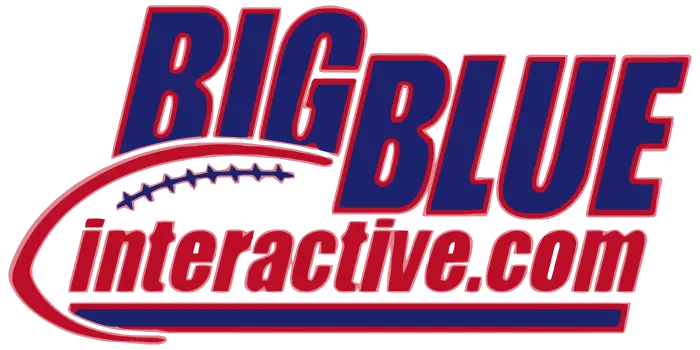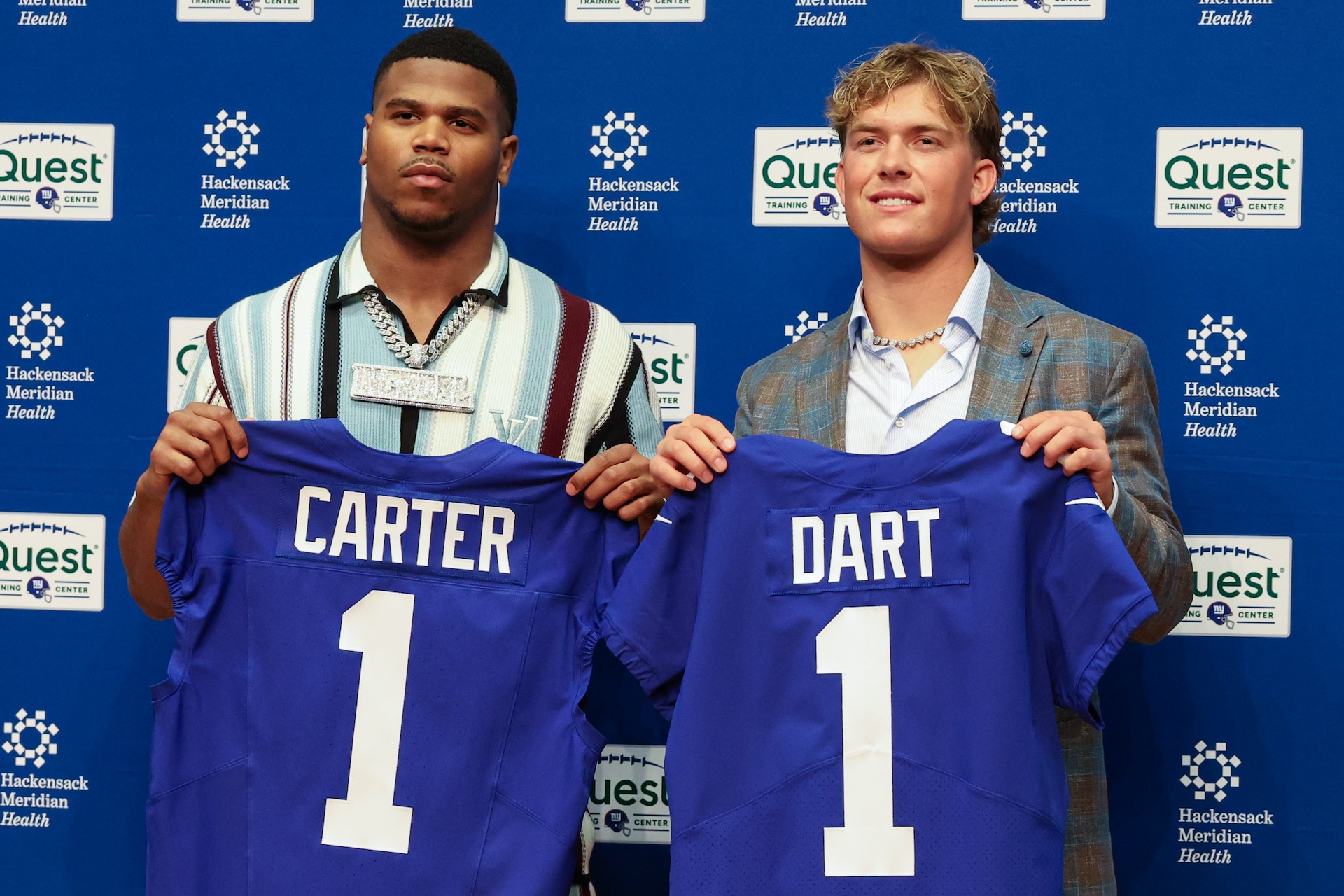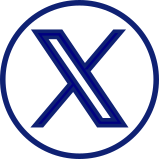For better or worse, the 2025 NFL Draft may end up being one of the most significant in New York Giants franchise history. The team entered the fray originally with nine selections and a desire to continue to add talent to a roster after a very active free agent signing period. However, despite arguably being the worst team in the NFL in 2024, a late-season upset over the Indianapolis Colts cost the Giants the #1 overall selection in the entire draft and any shot at consensus best quarterback Cam Ward. There was concern that a regime on the proverbial hotseat would foolishly pass on blue-chip prospects CB/WR Travis Hunter or OLB Abdul Carter with the #3 overall selection in favor of a lesser talent at quarterback (specifically Shedeur Sanders).
While the Giants had added players in free agency, particularly at quarterback, in the secondary, and on the defensive line, the Giants still needed help at all spots on the roster. Ideally, they wanted a young “franchise” quarterback to groom behind the two veterans they had signed. Addressing both lines of scrimmage was an obvious need. So was adding playmakers to the offense and depth in the secondary.
The predictions were that the Titans would draft Cam Ward at #1 and the Browns would select Travis Hunter at #2. As the draft approached, the talk of taking Sanders at #3 was replaced by the Giants selecting Abdul Carter. Then out of the blue came word that the Giants were actively trying to trade back up into the first round in order to draft not Sanders, but Jaxson Dart.
Ward was indeed drafted by the Titans, after the Giants reportedly made an attempt to trade up for him. Then came a potential fly in the ointment when the Jacksonville Jaguars traded up to #2. Other teams were also in discussion with the Browns for the pick. However, Hunter was still the selection. Would the Giants do the smart thing and make the obvious choice? They did, selecting Abdul Carter.
1st Round – OLB Abdul Carter: Carter has decent size (6’3”, 250lbs) and outstanding overall athleticism for the position. He served as an off-ball linebacker for two years at Penn State before being shifted to edge for his final season, becoming one of the nation’s top pass rushers. He was extremely productive against top competition, even when playing hurt. Carter has elite-level get-off, burst, bend, and closing speed. Not just an outside speed rusher, he has a variety of pass rush moves and will cross over or spin to the inside if a lineman oversets. Carter will hustle and chase from the backside. He flashes again the run, especially as a penetrator, but needs to improve stacking and shedding at the point-of-attack. Carter can be somewhat undisciplined and will over-pursue. Nevertheless, he has only scratched the surface of his potential. He demands special attention from other teams.
Then came the big mystery. The Giants had seven remaining picks: #34, #65, #99, #105, #154, #219, and #246. Would they draft a quarterback in what had become perceived as a weaker quarterback class? Would they trade up to do so? And if so, how much would they give away? Other teams made their selections in the teens, then early 20s. The Giants did not trade up before the quarterback-needy Steelers at #21. However, the Browns, now equipped with additional selections from the trade with the Jaguars, lurked at #33. Would they trade up? Would the Saints? What about the Rams at #26 who were thought to be possibly in the market for a young quarterback behind Matthew Stafford?
22, 23, 24 passed. Then came news the Giants had traded up with the Houston Texans. What did they give up? Did they give up #65? No, it was #99 and next year’s 3rd rounder to move up from #34 to #25. Not bad. The trade chart says the price was fair and not at a premium. The Giants indeed selected Dart, who ended up being the second quarterback taken in the draft. In other words, other than Cam Ward, the Giants got their preference. And word soon came out that Brian Daboll had been eyeing Dart since January. The Giants also had ties to Dart’s school. The offensive coordinator at Ole Miss was the son of Charlie Weis, who had coached under Ray Handley in the early 1990s. Joe Judge is currently a senior offensive analyst at the school. Of course, there were the Archie and Eli Manning connections. In the modern era, Dart became just the fifth quarterback selected by the Giants in the first round, joining Phil Simms (1979), Dave Brown (1992), Phillip Rivers (2004), and Daniel Jones (2019).
1st Round – QB Jaxson Dart: Dart lacks ideal height (6’2”), but he is a well-built guy with good overall size (221lbs) and mobility. Dart stands tough in the pocket and can make all of the throws with good arm strength and accuracy. He can hurt teams with his legs both on designed runs and scrambling out of the pocket. He does a good job of avoiding sacks and getting rid of the ball quickly. Dart has a gunslinger mentality, which sometimes can get him into trouble. He is more accurate on short and medium throws. Dart also played in a more simplistic system and he will take some time to develop, but he has a big upside if it all comes together for him. Very competitive and a team leader.
After the trade, the Giants were left five picks, having spent two on Dart. Would they still be able to address the offensive and defensive lines, as well as add a play-maker or two? Two of the five picks were 7th rounders. And now they would have to sit out all of the second round.
3rd Round – DT Darius Alexander: Alexander combines good size (6’4”, 305lbs) and long arms with overall athleticism. Strong. He is able to play multiple spots on a defensive front. Alexander is able to hold the point-of-attack against the run and flashes as a pass rusher. Disruptive, he plays with both power and surprising quickness. Alexander can pursue and close in hurry. He can improve his leverage.
4th Round – RB Cam Skattebo: Skattebo is a throwback who combines good size, power, and surprising athleticism. Short, but compactly built. He is quick, but lacks ideal break-away speed. He has a very low center of gravity and great contact balance. Extremely physical and competitive. Skattebo is very difficult to tackle and will violently punish defenders with his running style. He catches the ball very well. Football matters to him.
5th Round – OL Marcus Mbow: Mbow is a versatile, athletic lineman who has played both tackle and guard in college, but may project best to guard or center in the pros. He lacks an ideal frame and can have issues with power. Mbow has quick feet and uses his hands well. Plays with an attitude. He has a big upside if he becomes more consistent and gets bigger and stronger.
7th Round – TE Tommy Fidone: Fidone is a tall (6’5”, 243lb), athletic tight end who suffered two ACL injuries in college. He has a big frame with long arms, which provides excellent catch radius. Fidone moves well for his size, but he is more fast than quick. He can get down the field and is tough to tackle. Fidone is a good blocker as an H-Back.
7th Round – CB Korie Black: Black combines good size and overall athleticism. He is a long, fluid, fast, and rangy corner with experience in both man and zone coverage. While Black is physical in coverage, he needs to improve his physicality as a run defender. Black also has experience playing in the slot. He is a very good special teams player.
After a run on the top defensive tackles in round one, getting Alexander at #65 was very good news. In a draft filled with defensive linemen who are good at the run or rushing the passer, Alexander can do both. He easily could have gone in the 2nd round and fills a big need for the Giants.
When the Giants were on the clock early in the 4th round, the draft room debate was over Skattebo and Mbow. They chose Skattebo, who not only adds more firepower to the offense and will serve as a perfect complement to Tyrone Tracy, but he brings much needed toughness and attitude to the team. Not talked about enough is his ability to catch the football.
Unbelievably, only three offensive linemen were selected in the 48 picks between the Giants 4th and 5th round selections. Mbow, who many had projected as a 3rd-round talent, survived to pick #154 and the Giants gobbled him up. Mbow can play tackle, guard, and probably center. Getting one of the better OL prospects in the draft midway through the 5th round was a coup.
Fidone has a huge catch radius, is athletic for his size, and is a willing blocker. He should push for a roster spot. There is a huge need for depth at corner and Black has a nice combination of size and speed. His special teams value will help.
Overall, the Giants were able to address QB, RB, TE, and OL on offense and DT, OLB, and CB on defense. There were not enough picks to address WR, ILB, and S.
After every draft, teams always say they got the guys they targeted. However, this does ring true with the Giants in that at least six of the seven players selected were Top 30 visits (Fidone being the only one we don’t know about). The Giants also continued their trend of being attracted to Senior Bowl participants with four of the seven selections having played in the game.
On paper, this looks like “A” draft for the Giants. The Giants did not screw things up by passing on Carter, a potentially franchise-altering defensive player, for the quarterback. At the same time, after heavily scouting the entire quarterback class, the Giants traded up with minimal cost to select the second quarterback taken in the class. In other words, they finally “took a swing” at the position. This appears to be a Brian Daboll selection, and given the fact that 2025 will likely be a redshirt season for Dart, it strongly suggests that Daboll just strengthened his job security. Dart is a ball of clay who Daboll will attempt to mold into the elusive “franchise quarterback.” If he succeeds, and if Carter is truly as good as advertised, this draft could go down as the most significant in team history.
But beyond those two players, this draft looks VERY strong. Alexander, Skattebo, and Mbow all look like steals where the Giants got them. Each easily could have gone a round earlier and no one would have blinked an eye. Fidone and Black are good gambles in the final round and both have a legitimate shot at making the roster and contributing.
Finally, the undrafted rookie free agent class appears strong and also suggests where the Giants felt they still needed help, and where they did not. While all of the rumored signings have not been confirmed, and some may simply be invitees to the rookie mini-camp, the Giants appear to have added as many as five wide receivers (Beaux Collins, Antwane Wells, Jordan Bly, Da’Quan Felton, and Nate McCollum). Some of this is to simply add bodies for training camp, but the Giants are not very deep at the position after Malik Nabers, Darius Slayton, and Wan’Dale Robinson. Of note, Felton was given significant guaranteed money for a UDFA. He’s a big receiver (6’4”, 214lbs) with good speed and hands. Wells played with Dart at Ole Miss, and that should help his cause.
Also on offense, the Giants added tight end Jermaine Terry, who is somewhat similar to Fidone in style (tall, big catch radius, move TE blocker). They may have added two offensive linemen, Jaison Williams and R.J. Perry, and another big running back, Rushawn Baker.
Defensively, a number of their UDFA signings could seriously compete for roster spots, particularly in the secondary. There is a need for more depth at corner and safety. CB O’Donnell Fortune could easily have been drafted. He’s a tall, thin corner who makes plays on the football. Makari Page is a tall, thin safety who played under Wink Martindale at Michigan and received guaranteed money from the Giants. Safety Tommy McCormick was a play-maker at Idaho. Finally, OLB Trace Ford suffered three serious knee injuries, but he tested very well at his Pro Day and has flashed when healthy.
Of note is it appears that the Giants did not sign another defensive lineman, which suggests they feel more comfortable at the position after adding Roy Robertson-Harris, Jeremiah Ledbetter, and Chauney Gholston in free agency. They did not add an inside linebacker either.



